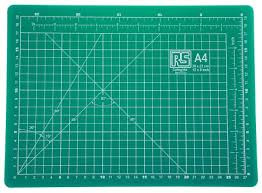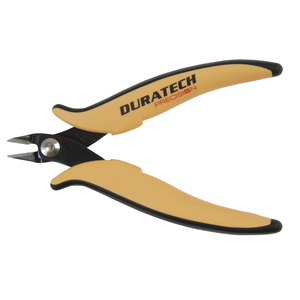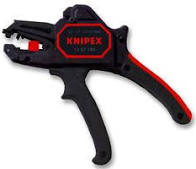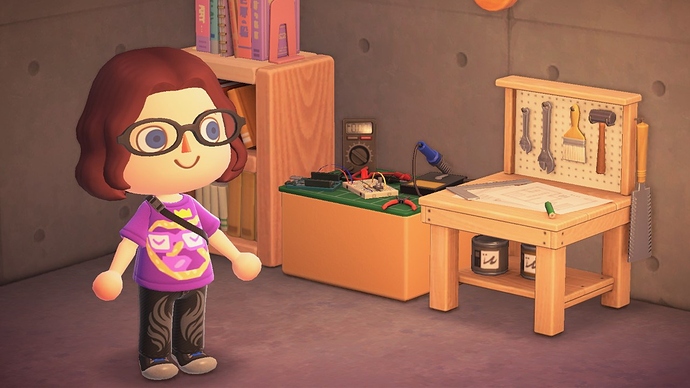Setting up a space to tinker
RFID and Electronics biased.
As with most hobbies this will take up some space and cost some initial investment (money and time) however it is a worthwhile endeavor and one that can be started with very little investment to begin with.
Change log (no need to look here);
07 Apr 2020: Initial revision.
08 Apr 2020: multiple changes including slight format change, added;
- Space (cutting mat, solder mat, wood)
- Tools (helping hands)
- Hand tools (scalpel, strippers, cutters, flush cuts, solder sucker)
- Consumables (solder, solder wick, flux)
- Parts (ribbon cable)
09 Apr 2020:
- Changed links to searches and UK suppliers (so they don’t expire quickly)
- Parts (voltage regs, LED’s, matrix board)
- Tools (bread board, bread board power supply)
- Additional tools (scope, function gen)
Space;
As with most hobbies this will take up some space, these are the most basic requirement for an area to tinker.
-
Place to work, ideally somewhere things can stay setup.1m wide by 60cm deep would be the minimum usable space.
-
Anti-static mat, wrist strap and connection cables (or a kit like this.
-
Part storage, small draw units or Surface mount component storage. The surface mount ones are great and because there available in multiple colors you can code part types. They can also be wall mounted if you have a 3D-printer handy.
-
Light, and lots of it really don’t underestimate how much light helps when looking at small parts. These types of magnifiers with lights are great.
-
Cutting mat , these are great for saving your ESD mat when you need to cut anything use this as a sacrificial top.
-
Wood, no not that you dirty bugger. I am talking about a block of wood, an old chopping board is great but pretty much anything this again is a sacrificial top for when you need to drill something etc.
-
Solder Mat, not much to say other than its heat proof and stops other surfaces getting damaged and the little sections are great when disassembling something.
Tools;
Now it wouldn’t be a very exciting space if we didn’t have anything to fill it with. These are some basic tools that will get you started the additional tools section is the more pricey but incredibly useful tools that will greatly improve your ability to tinker.
-
Soldering iron, MUST be adjustable really not worth not being adjustable. Other than that it can be pretty much anything you want the old hako brand irons are great and lots of knockoffs on the market that worrk almost just a well.
-
Soldering iron tips, the conical ones are awful get used to using chisel tips. Now im not going to go through how to chose your tip there is a video here that gives a basic overview.
-
Multimeter, ideally get 2 so you can measure current and voltage at the same time and auto ranging is a massive help to. Spend some money on this, Fluke are a great make and worth the money. Stay well away from the £10 el-cheapo models.
-
Magnification, head mounted ones with variable magnification as well as single loupe are incredibly useful.
-
Power supply, now this is fun we can get away with an old computer power supply from china or even a used unit. If you go the china or used route then make sure to get something 0-30V and 3-5A rated (your going to use 3.3, 5 and 12V more often than not) as this will be the most useful. Worth noting that it will be common to use more than one voltage at a time so may want more that one power supply.
-
Helping hands, theirs more than one type the simple croc clips and bar (i struggled with one for years) or the more advanced versions (i have now upgraded to and would not go back).
-
Bread board, and i don’t mean your mum’s out of the kitchen. Here’s one best way to begin building circuits without committing the parts with solder. Make sure to pick up either solid core hook up wire or a jumper kit like this.
-
Bread board power supply, not nessicary but simplyfy connection to power when playing on bread board supply 9-12v with a plug pack and off you go.
Hand tools;
These are the hand tools that without your hobby / lab will be significantly harder / impossible. The old mantra “buy cheap, buy twice” does apply however it is worth doing so if you are unsure you will use the tool.
-
Tweezers, not much to say on this one. ESD (anti static) and a whole selection.
-
Screw drivers, again not much to say i like interchangeable bit sets only getting fixed drivers for the most common sizes i use (linked kit bits are alloy and will strip if over tightened or wrong size used). You could even go for an electric one, these really are the dog b#####ks but probably over kill.
-
Scalpel / Exacto, a good knife is always needed. I love my Swann Morton No.3 for almost everything equiped with a 10A blade however some people especially Americans have an affirmation with Exacto knives similar to hobby knives.
-
Wire strippers, there are so many different types that its not worth me trying to tell you which to get. I like by auto strippers but also have a pair of these and use both on a regular basis. Great video about wire strippers by non other than Adam Savage.
-
Wire cutters, these are not the same as flush cuts below. These are your standard cut all and be abused cutters for most wire, small cable and thin metal rods.
-
Flush cuts, these are your precision cutters specifically for thin wire and through hole leads. Look after them then will be sharp and theirs nothing worse than going to use them and they look like British teeth
 .
. -
Solder sucker, the only real way to remove / de-solder through hole components non destructively minus the soldering iron version(for most people the electric version is over kill and will normally not be of interest).
Parts;
Right so we need some parts what else are we going to solder or tinker with?
-
Resistor kit and there is a definite bonus to working with those types of parts for example they are significantly smaller and easier to store. The down side of them is that you can’t prototype on bread board easily, and they are harder to solder (to start with) more often than not i go straight to custom PCB’s. The choice is yours but both have pros and cons, here is a great write up from a engineer born in 1985 venting at people not liking surface mount (good read to consider).
-
Capacitor kit(s), now this again can be through hole or surface mount i am not going to link both types again but what i will say is there are different types of capacitors and each have there uses (have a look here for an overview). You will inevitably end up needing different types for different applications but here are 2 of the most common.
-
Wire, this is endless here is what i keep on hand (note that you should have a selection of colors):
- 30AWG kynar, solid core, this is great for bodges (read as mods) to PCB’s, to wire SMD components, and wire wrapping.
- 22AWG, Stranded, this is you normal harness type wire great for connectors (wire to board, think molex).
- 17 AWG, Stranded, more commonly called 1mm “thin wall” this is my main power wire its used on 12V Vehicals and is rated as such (great source for this if in the UK or Europe is 12VoltPlanet)
-
Ribbon cable, while not strictly required this is so useful when modifying equipment (see Ben Hecks portable videos) that i would be perturbed it i didn’t have some on hand plus the rainbow stuff is cool.
-
Voltage regulators, you can get what you want or need in this category but it is a very good idea to have them on hand. To start with you could get yourself a kit to begin with and replenish what you use. Try to stick to linear regulators until you understand the issues that can arise from poor design.
-
LED’s, again a nice selection pack on hand is great until you start designing your own PCB’s.
-
Matrix board, this is a great step up from bread boarding projects when you want to make them more permanent. Once again get an assortment different sizes and types are great. If you get strip board make sure to pick up a track cutter.
Consumables;
This is the section for things that you need / want on hand but will be consumed while using them.
-
Solder, this can be leaded or lead free both can be purchased and used just make sure to get a decent multi core variant. The choice is yours once again this video gives a good comparison between the two types, it is worth noting that if you plan on making something to be sold in the EU then it will have to be lead free. A big help when learning to solder is using the right size of solder, to that end i would recommend getting a thin (<=0.7mm) and a thick (>=1.25mm) version of whichever you choose. I favor leaded as i find it “wets” better however once used to using lead free you can switch between the two easily.
-
Solder wick, this like Marmite some people love it some hate it. Get multiple width.
-
Flux, put shortly it is an acid that prevents solder joints from oxidizing when soldering (here is a video). These come in liquid form and gel types both have there uses for liquid the pen dispensers are useful while the gel will come in small syringes. Get some of each just make sure its “no clean”.
Arduino;
To be completed.
Additional tools;
This category is for anything that is not essential but will significantly improve your ability to tinker, widen the breadth of projects you can undertake and in the long run be invaluable to you when something doesn’t work as expected.
-
oscilloscope, when you have an issue where you need more information than a simple multi meter can provide. If you need to uncover information like frequency, noise, amplitude, or any other characteristic that might change over time you need an oscilloscope. These come in a multitude of sizes and types but don’t too overwhelmed or bogged down in the spec.
These can vary from digital to analog and even USB but the main thing is to learn how to use it, SparkFun have a great introduction to oscilloscopes page here so head on over and take a read.
As reviewed by Dave Jones over at the EEVBlog (another place to look at if you want to get started in electronics) the Rigol DS1054Z is an amazing beginner scope that is hard to beat on the bang for buck. Below is a minimum spec that would be useful if you want to hunt on your own alternatively compare to the above version(please bear in mind this is orientated towards the interests cover in this forum namely RFID).- 20MHz bandwidth (minimum)
- 1GSa/s or 1000000
- 2 channel
- 8bit resolution
-
Function or signal generator, this is one of the tools you could easily build yourself. This device produce repeating sine waves, and the such. Commonly used to design and repair electronic equipment, function generators measure the output signal by sending signals to test a specific circuit that is connected to an oscilloscope. Function generators come in myriad models and types which make them suitable for testing many kinds of electronic appliances. Also have a look on eBay for used and pre-loved equipment as well as made in china units look here.
Online resources;
To be completed.
Books;
To be completed.
Tidbits, Conventions and notes;
To be completed.
None of the links included are to videos i have created or products i sell or endorse they are simply there to give you an idea of what to acquire.













